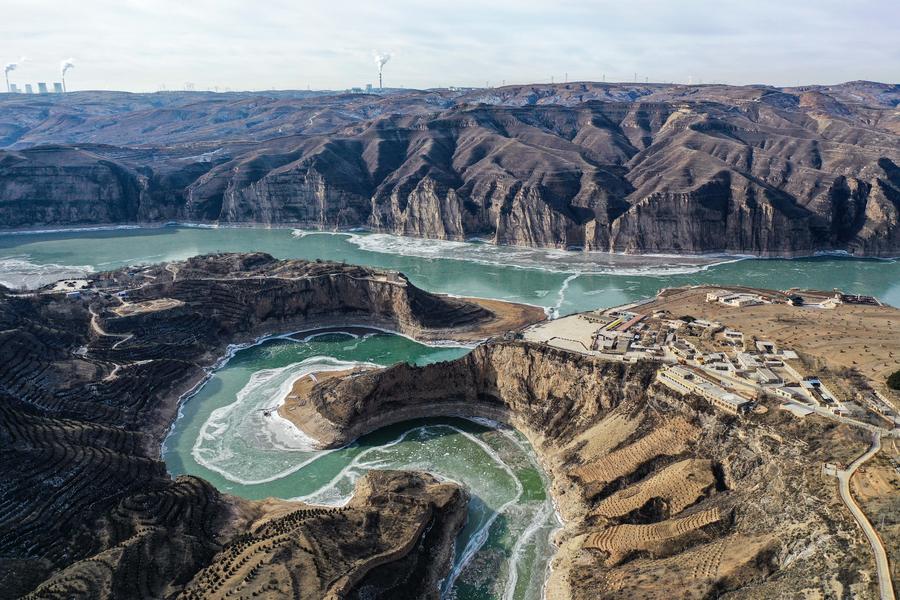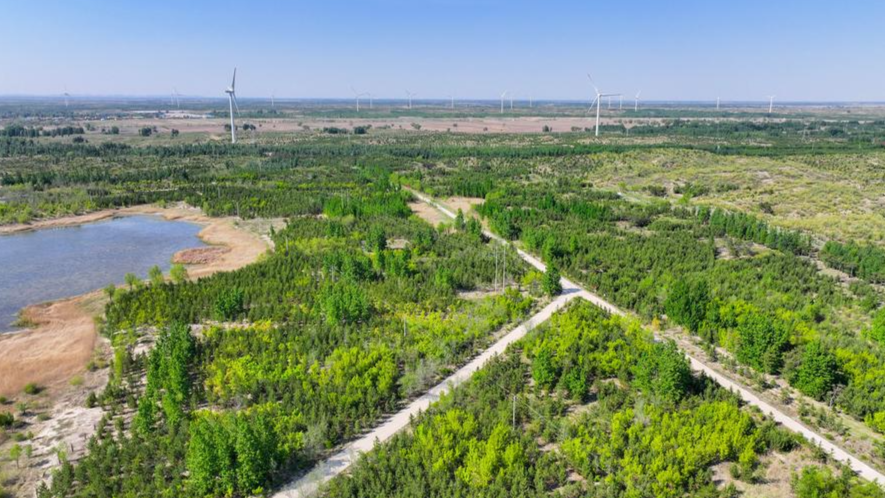
HOHHOT - This spring, the challenging task of afforestation at the edge of the Mu Us Desert in northern China takes on a futuristic feel, with drones soaring through the air, transporting seedlings across vast sand dunes, while intelligent planting machines carve through the sands, embedding saplings with precision.
"It only takes five seconds for these robots to plant a seedling in the desert," said Gao Fei, as he remotely operated the two planting machines.
Gao, who works with the Jintaiming Technology Group based in northern China's Inner Mongolia autonomous region, explained that these are the company's second-generation intelligent tree-planting machines. They can completely automate the tree-planting process, from loosening the soil with an auger and inserting the sapling to watering its roots, covering it with soil, and compacting it.
"Four such machines, still in the trial phase, were deployed this year. The production line for the machines has yet to be fully launched," Gao said, adding that the company holds independent intellectual property rights for the intelligent machines.
He went on to explain that the machines integrate advanced technologies such as spiral ground drilling, unmanned driving, and artificial intelligence to enable large-scale, round-the-clock tree planting without human intervention. The company is also investing in the development of other intelligent machines to accommodate different planting scenarios.

The desert lies near the irrigated lands of the Hetao section of the Yellow River, China's second-longest river. Winding through Inner Mongolia with sweeping bends, the river stretches over 840 km in the region. In addition to the Mu Us Desert, its banks border the Ulan Buh and Kubuqi deserts.
Inner Mongolia has identified a total of about 15 million hectares of desertified land spread across areas governed by seven cities, which are the source and pathway of sandstorms that impact the Beijing-Tianjin-Hebei region.
ALSO READ: Fewer sand, dust storms expected in northern China this spring
To mitigate sandstorms, ensure food security, and protect the Yellow River - China's mother river - afforestation in Inner Mongolia serves as a key battleground for the country's ambitious Three-North Shelterbelt Forest Program (TSFP), initiated in 1978 to combat desertification.
Yan Wei, director of the TSFP center in Ordos City, Inner Mongolia, said that in the afforestation program in Otog Banner, where the robots are used, this year's target is to plant trees across 3,333 hectares of sandy land, with 60 percent of the work supported by various types of machinery.
There are 20 drones used for transporting seedlings in the program area, which improves the efficiency of transporting large amounts of the saplings in the complex terrain.

Meanwhile, the smart tree-planting machine is capable of performing ten times the amount of work that a human laborer can do in a day, while its cost is just 30 percent of the labor cost, Gao said.
He added that machine-planted salix mongolia, a drought-resistant willow tree species, demonstrated a higher survival rate compared to those planted manually. The company remains optimistic about the market potential for intelligent planting robots.
China's expertise and experience in building windbreaks on deserts have earned global acclaim. By using grass grids made of wheat straw to stabilize the sand, vast numbers of people from all walks of life have been mobilized to plant trees, expanding the "green Great Wall".
READ MORE: WB official: Ningxia provides model for desertification control, green growth
According to Ma Qiang, deputy director of the Inner Mongolia regional forestry and grassland administration, anti-desertification efforts must transcend administrative boundaries. He stressed that desertification prevention and control should be integrated with new energy initiatives, such as the development of wind and photovoltaic power projects in desert regions.


